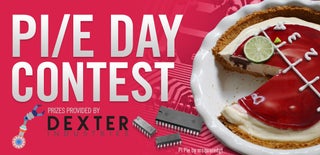Introduction: Helping Special Needs Children - the Magic of Makey Makey
Member Adam writes:
After we received 5 Makey Makey kits at fizzPOP: The Birmingham Makerspace, I must admit I was stuck for ideas on how to use them. So I decided to take them into work and try them out with some of the autistic youngsters that I work with. It turned out to be a perfect fit for children on the autism spectrum, the opportunity to explore colour, shape, and sensory experiences can stimulate attention, foster calm, and stimulate learning and be a lot of fun.
Step 1: Unboxing and Thanks!
Makey Makey sent "fizzPOP: The Birmingham Makerspace" 5 of these full kits. You can see from the photo that they come with lots of leads and bits in a nice tin can for storage.
Thanks, Makey Makey!
Thanks also to Adam, for taking the time to introduce these fun kits to "his kids", and going through the paperwork to let us write it up!
Step 2: Getting Started
At first of all we tried a lot of the experiments you see on the fantastic demo video you see on the Makey Makey website.
Set-up is described in depth here:
http://makeymakey.com/howto.php
so we won't re-hash it.
One of the things we found useful in trying out some of the experiments was to use a Raspberry Pi instead of a PC - this meant we could set up the experiment anywhere without the worry of expensive PC’s and laptops being damaged in the process. This is a particular concern in an educational environment, and especially when working with special needs children.
Fortunately, as the Makey Makey pretends it is a USB keyboard, it is just plug-&-play to the Pi. :-)
Step 3: Scratch
The first thing we did was see if the Makey Makey would work with "Scratch" a visual programming tool we have been using for a lot of the students for a while. And indeed it did.
We tried out a few of our own experiments, as shown in the photos.
Step 4: Hardware
You will need:
The Makey Makey board
USB to Micro-USB cable
7 Alligator clips
6 jumper leads
(All in the kit!)
Bare Conductive Electric Paint Pen (you could also use a soft 6B pencil)
Raspberry Pi + Accessories (We set this up following the instructions you can find over at Raspberry Pi website)
Step 5: Config
Once the Pi was working, at this point we plugged in the MaKey MaKey with the micro usb cable and attached the Alligator clips to the ground, up, down, left, right connections.
At this stage you can test the makey makey by pressing the metal line at the bottom of the board and one of the arrows, & you will see a light turn on.
Step 6: Coding
We decided it would be interesting to make our own instruments using a visual programming language called Scratch which you will find on the Pi’s start menu (if using NOOBS) Our program looked something like this.
(There are also more examples on https://scratch.mit.edu/)
Step 7: Music Time
Using one of the alligator clips we connected an object to one of the plugs on the board. It is fun to try this with tin foil or just other people holding different leads and shaking hands etc.
Just remember that you need to make each key link to the metal strip at the bottom of the board by some route.
Then every time you touch the object, the raspberry pi will make a sound.
Wire up all 5, and each object will make a different note!
Step 8: Paper Instruments
The next stage we decided it would be fun to make our own input device so we used the conductive ink pen and drew up the controller as follows.
Then add the crocodile clips once dry.
(You could also use a heavy line from a soft pencil)
Step 9: Play!
Once dry, any time you touch the drawn "key" so your finger covers the two lines, the Scratch program will make the Pi play a sound. You can, as we did, program each key to be a different note.
Step 10: The School Newsletter - Fame at Last
To find out more about this special school, and see some photos of the Makey Makey in use, check out the Baskerville School Website!
http://www.baskvill.bham.sch.uk/
The kids loved it!

Participated in the
Pi/e Day Contest













